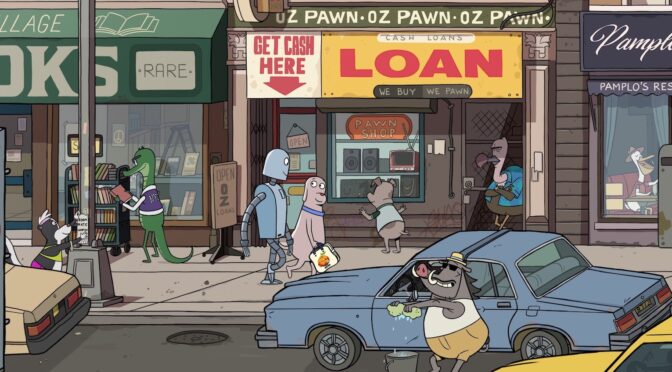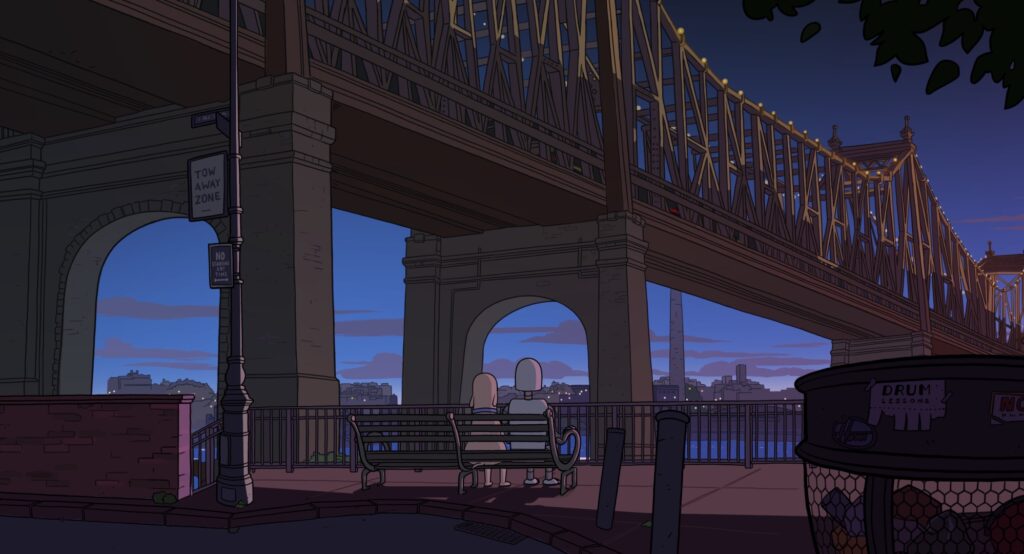Article by Angela Borraccio
Translation by Rebecca Lorusso
The Spanish director Pablo Berger and the Arcadia Motion Pictures renew their collaboration to create their first 2D animated film. As with the previous Blancanieves (“Snow White”, 2012) – a black and white silent film – the director feels the need to reconnect with the essence of early 20th century cinema. For Robot Dreams he also looks back to the past, specifically to traditional animation, fascinated by its unlimited possibilities of storytelling and representation. Berger succeeds in tackling the challenge of the step-by-step technique – or, frame by frame – with ease, thanks to the habit of creating storyboards, which allowed him to integrate an ideal process for the development of animation.
The inspiration for Robot Dreams are images of the homonymous graphic novel by Sara Varon, who has guided the film towards the ligne claire graphic style. Starting from Varon’s images, with the collaboration of the art director José Luis Ágreda and the animation director Benoît Feroumont, Berger was able to develop concepts, characters, and ideal backgrounds for the film adaptation. In an animated film, artists and animators become the “actors”, and for this reason, the director decides not to use voices and dialogues, focusing on the expressive power of storytelling through images, accompanied by sounds that perfectly describe the colorful urban atmosphere of the 1980s.
Robot Dreams reflects on friendships, but mostly on the acceptance of loss. Dog lives in Manhattan and is tired of loneliness, so he decides to build a robot. The two become inseparable, but unfortunately, one summer night Dog is forced to leave Robot on a beach. From this moment on, Robot’s dreams, a delusional expression of his desire to meet his friend again, become the essence of the film. The dream world in which we are transported once again shows the attention to the cinema of the past – honored in particular through references to Charlie Chaplin and Buster Keaton’s Sherlock Jr. (1924). Dynamic and unexpected twists and turns follow each other beyond all limits, holding the attention of the public who will keep wondering whether the two friends will ever meet again.


